Disc brakes
This article refers to the address: http://
Disc brakes, also known as disc brakes, are named after their shape. It is controlled by hydraulic pressure. The main components are brake discs, sub-pumps, brake calipers, and oil pipes. The brake disc is made of alloy steel and is fixed to the wheel and rotates with the wheel. The sub-pump is fixed on the bottom plate of the brake, and the two friction plates on the movable clamp are respectively mounted on the two sides of the brake disc, and the piston of the sub-pump is hydraulically conveyed by the oil pipe to push the friction plate against the pressure. The friction plate brakes and acts like a pliers to clamp the rotating plate and force it to stop.
The disc brake has fast heat dissipation, light weight, simple structure and convenient adjustment. Especially when the load is high, the high temperature resistance is good, the braking effect is stable, and it is not afraid of muddy water attack. In winter and bad road conditions, the disc brake is easier to stop in a shorter time than the drum brake. Some disc brakes also have a number of small holes in the brake disc to accelerate ventilation and improve braking efficiency.
Anti-lock brake system (ABS)
ABS is an abbreviation of Anti-lockBrakingSystem. The world's first ABS system was first applied on the aircraft, and later became the standard equipment for premium cars. Now most cars are equipped with ABS. As everyone knows, you can't step on the brakes when you brake, but you should step on the brakes and step on it until the car stops. However, when you encounter a sudden brake, you often need to stop the car urgently.
At the end, the car is stopped. At this time, the wheel is prone to lock and not rotate, which causes the car to have dangerous working conditions. For example, the front wheel is locked and the car loses the ability to turn, and the rear wheel is prone to tail accident. The installation of ABS is to solve the problem of wheel lock when braking. The ABS-equipped car can effectively control the wheel to remain in rotation without being locked, thus greatly improving the stability and poor road surface of the car during braking. Car braking performance under conditions. ABS continuously detects the rotational speed of each wheel through a rotational speed sensor mounted on each wheel or drive shaft, and the computer calculates the current wheel slip ratio (from the slip rate to know whether the car wheel is locked), and ideal In comparison with the slip ratio, a decision is made to increase or decrease the brake pressure of the brake, and the actuator is commanded to adjust the brake pressure in time to keep the wheel in an ideal braking state. Therefore, the ABS device can keep the wheel braked in a rolling state with a slight slip, and does not lock up, thereby achieving the purpose of improving the braking performance.
Electronic Brake Force Distribution System (EBD)
The EBD can automatically adjust the braking force distribution ratio of the front and rear axles according to the difference in axle load transfer caused by the braking of the car, improve the braking efficiency, and improve the braking stability with ABS. When the car is braking, the ground conditions on which the four tires are attached are often different. For example, sometimes the left front and right rear wheels are attached to the dry concrete floor, while the right front and left rear wheels are attached to the water or mud. This can result in four wheels and the ground when the car is braking. Friction is not the same, it is easy to cause slipping, tilting and vehicle rollover accidents when braking. EBD uses high-speed computer to sense and calculate the different grounds attached to the four tires at the moment of braking, and obtain different friction values, so that the braking devices of the four tires can be used in different ways according to different situations. The power brakes and constantly adjusts at high speed during the movement to ensure the stability and safety of the vehicle.
Traction Control System (TCS)
TCS is also known as tracking control system. When the car brakes on a smooth road, the wheels will slip and even cause the direction to go out of control. Similarly, when the car starts or accelerates, the drive wheels may slip, and the road will be out of control on a smooth road such as ice and snow. T<蹯÷ is designed for this problem. When the TCS relies on an electronic sensor to detect that the driven wheel speed is lower than the drive wheel (this is the characteristic of the slip), it sends a signal to adjust the ignition time, reduce the valve opening, reduce the throttle, downshift or brake the wheel. Thereby the wheels are no longer slippery. TCS can improve the driving stability of the car, improve the acceleration and improve the climbing ability. Originally only the TCS was installed on the limousine, and it is now available on many ordinary cars. If TCS is used in conjunction with ABS, it will further enhance the safety of the car. TCS and ABS can share the wheel speed sensor on the axle and connect with the driving computer to continuously monitor the speed of each wheel. When the slip is found at low speed, TCS will immediately notify the ABS action to reduce the slippage of the wheel. If the skid is found at high speed, the TCS immediately issues a command to the driving computer to command the engine to slow down or the transmission to downshift, so that the skid wheel no longer slips, preventing the vehicle from running out of control.
Electronic Stabilizer (ESP)
The Electronic Stabblity Program (ESP) was first used by Mercedes-Benz in its Class A vehicles. ESP is actually a traction control system. Compared with other traction control systems, ESP not only controls the drive wheels, but also controls the driven wheels. For example, when the rear-wheel drive vehicle often has too many steering situations, when the rear wheel is out of control and the tail is tailed, the ESP will slow the outer front wheel to stabilize the car; when the steering is too small, in order to correct the tracking direction, the ESP will brake. Slow the inner rear wheel to correct the direction of travel.
Smart air conditioner
The intelligent air conditioning system can analyze, judge, and automatically turn on the cooling, heating, dehumidification and air in time according to the external climatic conditions according to the preset indicators of the signals transmitted by the temperature, humidity and air cleanliness sensors installed in the vehicle. Purification and other functions. In advanced safety vehicles, the air conditioning system is also combined with other systems (such as the driver's doze alarm system). When the driver is found to be insane and has signs of dozing, the air conditioner can automatically emit a sober fragrance.
smart key
The Mercedes-Benz CLK coupe has adopted a smart key that emits infrared signals that can open one or two doors, trunks and fuel filler caps, as well as the windows and sunroof of the car. The advanced smart key is like a credit card. When the driver touches the door handle, the central lock control system starts working and sends a wireless inquiry signal. After the smart key card responds correctly, the lock is automatically opened. The engine will only start when the central processor senses that the key is stuck in the car.
Anti-glare rearview mirror
The anti-glare rearview mirror is generally installed in the compartment. It consists of a special mirror and two photodiodes and an electronic controller. The electronic controller receives the front and rear light signals from the photodiode. If the illumination is illuminated on the interior mirror, if the rear light is greater than the front light, the electronic controller will output a voltage to the conductive layer. This voltage on the conductive layer changes the color of the mirrored electrochemical layer. The higher the voltage, the darker the color of the electrochemical layer. At this time, even if the light is irradiated onto the rearview mirror, the anti-glare interior mirror is reflected to the driver's eyes. On the top, it shows dark light, it won't dazzle. The mirrored electrochemical layer causes the reflection i11 to automatically change continuously according to the incident intensity of the rear light to prevent glare. When the vehicle is reversing, the anti-glare interior mirror anti-glare function is released, and the right exterior mirror automatically illuminates the ground.
High brake lights
The general brake light (brake light) is mounted on both sides of the rear. When the driver presses the brake pedal, the brake light is illuminated and a red light is emitted to remind the following vehicles to pay attention. The brake light is extinguished when the driver releases the brake pedal. The high brake light is also called the third brake light. It is usually installed at the top of the rear of the vehicle so that the rear vehicle can detect the vehicle ahead and brake it to prevent the rear-end collision. Since the car has two left and right brake lights, it is customary to refer to the high brake light installed in the upper part of the rear as the third brake light.
Rain sensor
The rain sensor is hidden behind the front windshield, which adjusts the action of the wiper according to the amount of rain falling on the glass, thus greatly reducing the driver's troubles.
The rain sensor does not change the speed of the wiper with a few limited gears, but makes a stepless adjustment of the speed of the wiper. It has a light-emitting diode called LED that sends far-infrared rays. When the glass surface is dry, the light is reflected back almost 100%, so that the photodiode can receive a lot of reflected light. The more rain on the glass, the less light is reflected back, and the result is that the wiper moves faster.
Side door anti-collision bar
It is well known that when a car is hit by a side, the door is easily deformed by the impact, thereby directly damaging the occupants in the car. In order to improve the safety performance of automobiles, many automobile companies place one or two very strong steel beams in the middle of the door sandwich between the two sides of the car. This is commonly known as the side door anti-collision bar. The anti-collision function of the anti-collision bar is: when the side door is impacted, the solid anti-collision bar can greatly reduce the degree of deformation of the side door, thereby reducing the damage of the car occupant to the occupant.
Safety body
In order to reduce the casualties of the occupants in the collision of the car, the passenger compartment is designed to strengthen the passenger compartment and weaken the head and tail of the car. When the car collides, the head or tail is flattened and absorbs the collision energy, while the cabin does not deform to ensure the safety of the occupant.
Safety glass
Safety glass has two kinds of tempered glass and laminated glass. Tempered glass is a high-strength glass that is pre-stressed by rapid cooling of the glass in a hot state. When the tempered glass is broken, it is split into a plurality of small pieces without sharp edges, which is not easy to injure. There are 3 layers of laminated glass. The middle layer has strong toughness and adhesion. When it is damaged by impact, the inner layer and the outer layer still adhere to the intermediate layer, which is not easy to injure. Laminated glass for automobiles, which is doubled in thickness, is widely used because of its good safety.
Pre-tight seat belt
The pre-tensioned seat belt is characterized by the moment when the car collides, when the occupant has not moved forward, it will first tighten the webbing, immediately tie the occupant tightly to the seat, and then lock the webbing to prevent the occupant from being in front of the body. Dive, effectively protect the safety of the occupants. The retractor used in the pre-tensioned seat belt is different from the ordinary seat belt. In addition to the retractable webbing function of the ordinary retractor, it also has the ability to strengthen the restraint of the occupant by about 0.1 s when the vehicle speed changes drastically. Force, so it also has control devices and pre-tensioning devices.
There are two types of control devices: one is an electronic control device and the other is a mechanical control device. Pre-tensioning devices come in many forms. Common pre-tensioning devices are deflagrating and consist of a gas initiator, a gas generating agent, a conduit, a piston, a rope and a drive wheel. When the pre-tensioning device is excited when the car is hit, the gas initiator at the bottom of the sealing pipe immediately ignites spontaneously, detonating the gas generating agent in the same sealed conduit, and the gas generating agent immediately generates a large amount of gas expansion, forcing the piston to move upward to pull the rope. The rope drives the drive wheel to rotate the drive wheel to rotate the reel drum, and the webbing is wound on the reel so that the webbing is pulled back. Finally, the retractor will temporarily lock the webbing and secure the occupant's body to prevent the body from leaning forward to avoid collision with the steering wheel, instrument panel and glazing.
Airbag (SRS)
Airbags are high-tech devices that are eye-catching on modern cars. The steering wheel of the car equipped with the airbag device is usually no different from the ordinary steering wheel, but once the front end of the car has a strong collision, the airbag will instantly "snap" out of the steering wheel and pad between the steering wheel and the driver to prevent it. The driver's head and chest hit a hard object such as a steering wheel or dashboard. Since the launch of the airbag, many people have saved their lives. Studies have shown that cars with airbags have a frontal crash, the driver's death rate, the car is reduced by 30%, the midsize sedan is reduced by 11%, and the small car is reduced by 14%.
Airbags are mainly composed of sensors, microprocessors, gas generators and airbags. The sensor and the microprocessor are used to determine the degree of collision, transmit and transmit signals; the gas generator generates an ignition action according to the signal indication, ignites the solid fuel and generates gas to inflate the airbag, so that the airbag rapidly expands, and the airbag capacity is about (50-90) L. . At the same time, the airbag is provided with a safety valve, and when the inflation is excessive or the pressure inside the bladder exceeds a certain value, part of the gas is automatically released to avoid crushing the passenger. Most of the gases used in airbags are nitrogen or carbon monoxide. In addition to the airbags on the driver's side, some passenger cars are equipped with airbags for passengers (ie, dual airbags). The passengers use the same as those used by motorists, except that the airbags are larger in size and required. There are more gases. In addition, some cars have side airbags mounted on the side of the seat on the side of the door.
Smart airbag
Smart airbags add sensors to the normal type to detect whether the occupants in the seat are children or adults, how fast are the seat belts and where they are located? By collecting these data, by the electronics The computer software analyzes and processes the airbag's expansion to optimize its function and avoid unnecessary expansion of the airbag, thus greatly improving its safety. Smart airbags have two more core components than the normal ones, namely the sensors and their associated computer software.
The sensors currently used mainly include: a weight sensor that senses whether someone is based on the weight of the seat, whether it is an adult or a child; an electronic area sensor. It can generate a low-energy electronic area in the cab, measure the current and position of the occupant through the current in the area; the infrared sensor detects the presence of the person according to the heat to distinguish it from the inanimate object; the optical sensor. If the same camera looks at the seat and compares it with the image of the stored empty seat to determine the presence and position of the human body; the ultrasonic sensor detects the occupant by transmitting ultrasonic waves and then analyzing the reflected waves after the encountered object Existence and location.
Another important task in the design and development of smart airbags is the development of computer software. Generally speaking, the computer software should be able to respond according to the occupant's size, weight, whether the seat belt is fastened, the position of the person on the seat, the speed of the vehicle when the vehicle collides, and the degree of impact. The timing, speed and extent of airbag expansion allow the airbag to provide the most reasonable and effective protection for passengers, especially to reduce the risk of physical shortness to children.
Occupant Head and Neck Protection System (WHIPS)
WHIPS is generally placed in the front seats. When the car is hit by the rear, the head and neck protection system will quickly inflate and expand, and the entire backrest will be tilted back with the occupant. The occupant's entire back and backrest will be close together, and the backrest will be tilted back to the maximum. To reduce the force of the head forward, the seat back and headrest of the seat will move horizontally backwards, so that the upper part and the head of the body are gently and evenly supported and protected to reduce the impact on the spine and neck. Force and prevent the damage caused by the back of the head.
We are a professional manufacturer of 3D viewers cases for Iphone. Our company are located in Korea.
Iphone 3D Viewer is a magic phone case, but you can use it to watch 3D movies, games, vedios wherever you go. The traditional VR headset is too hearvy, but this phone case is light weight, you can throw away the traditional VR glasses for smatphones right now, and try our iphone 3D viewers, your will drop in it!
For more information about how it works, please read the following descriptions:
HOW TO USE THE SNAP3D AS A 3D SCREEN
The attached 3D screen on the Snap3D acts like 3D glasses.
To turn your smartphone into a 3D device, you need to first download the [Mplayer3D" application.
Then install the Snap3D on your smartphone screen and run Mplayer3D.
Enjoy the stunning stereoscopic 3D!
About Mplayer3D
An application that transforms your smartphone into a 3D TV.
Can be download for free.
Supports video streaming on YouTube
A video player which DOES NOT support contents.
Provides demo videos only in the download section.
- Supported format: MP4
- DOES NOT support 2D to 3D conversion.

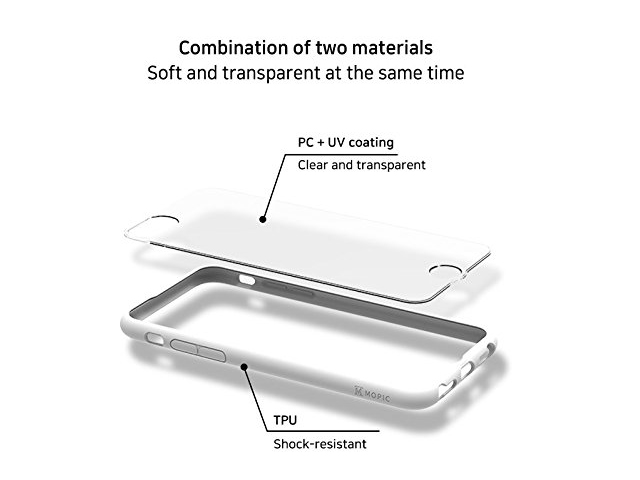
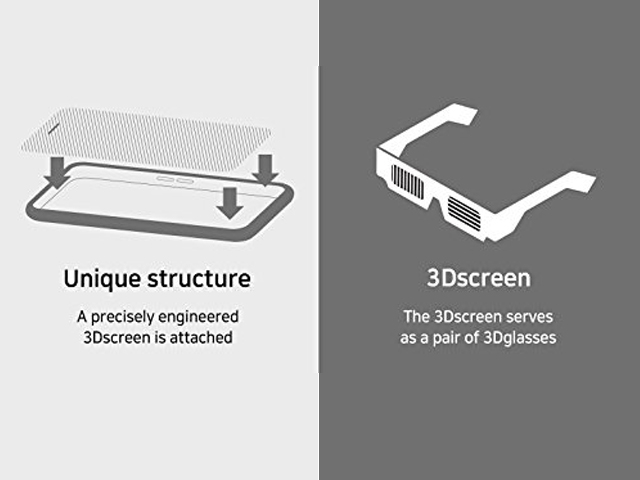
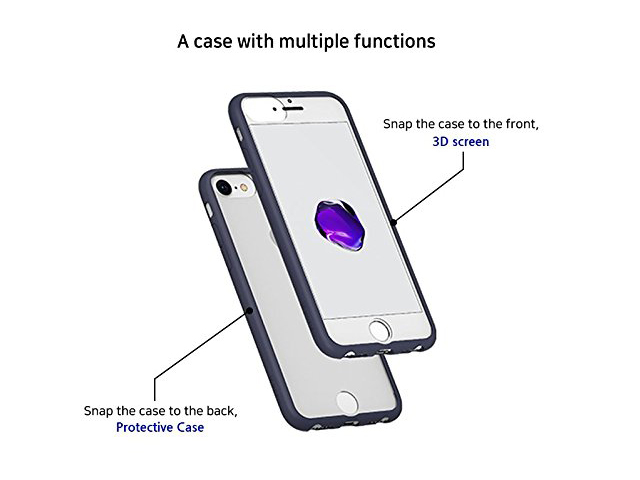
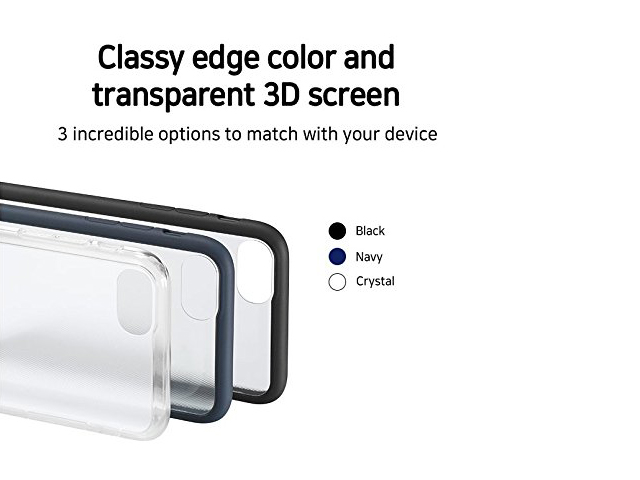
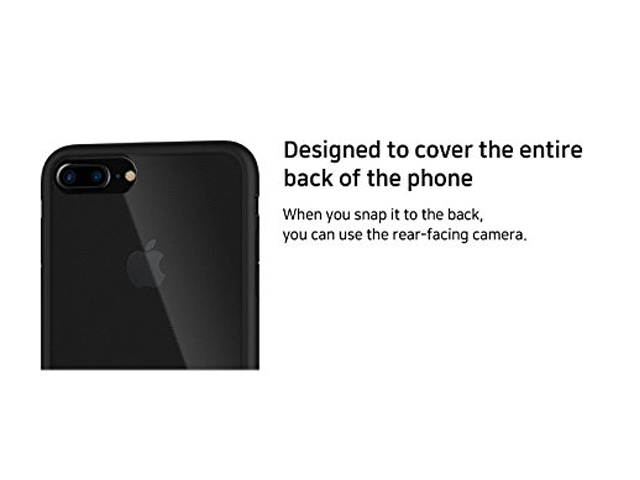
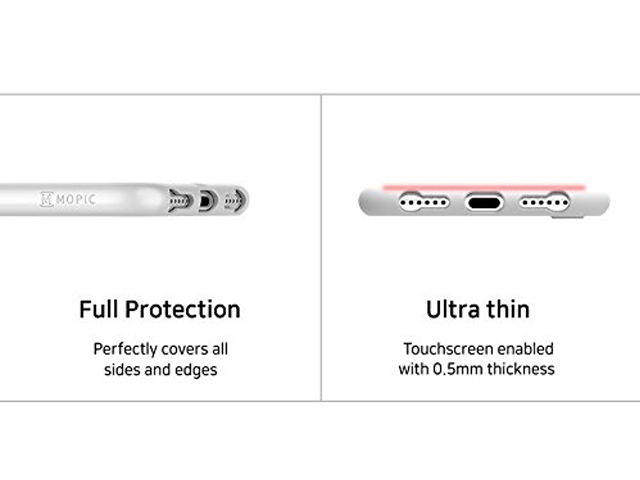
Iphone 8 3D Viewer,Iphone 8 Vr Viewer,3D Viewer For Iphone 8,Vr Viewer For Iphone 8
iSID Korea Co., Ltd , https://www.isidsnap3d.com